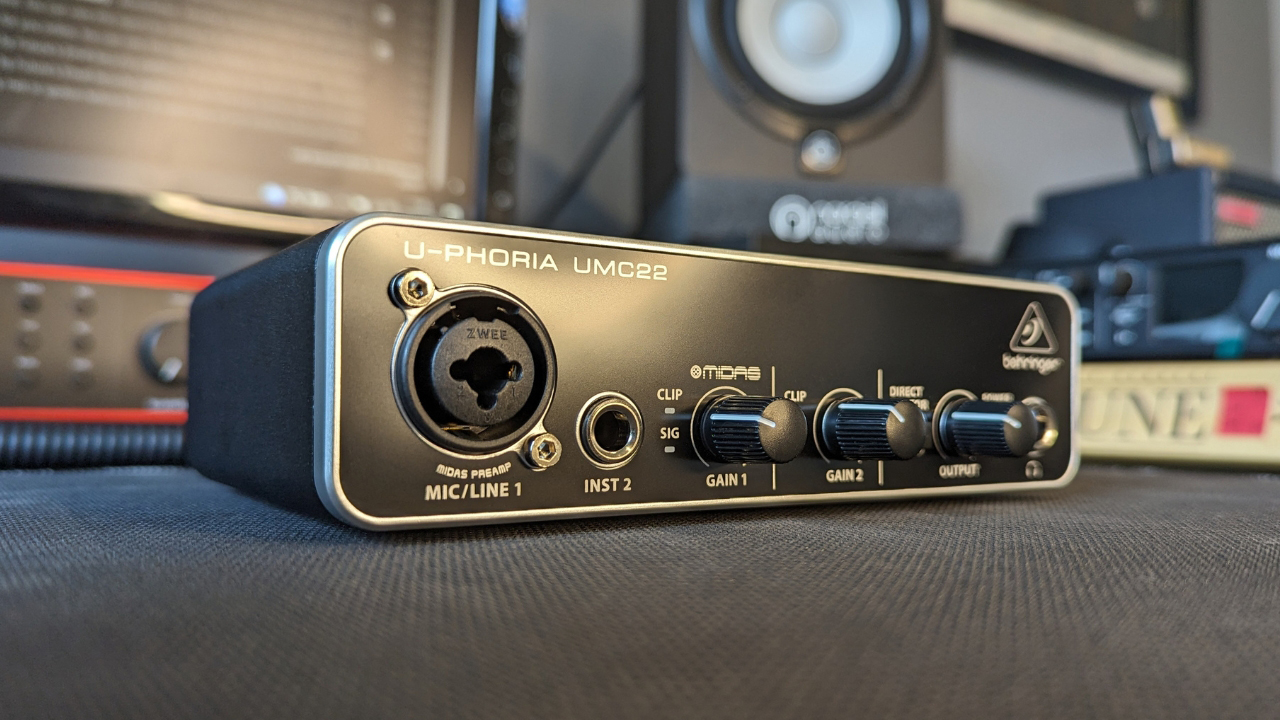MusicRadar Verdict
It’s not perfect but at this price, it’s hard to knock the Behringer UMC22. Representing incredible value for money, it’s a great audio interface for first-timers or those on a tight budget.
Pros
- +
Insane value for money
- +
Nice and compact size
- +
Great for home studio work
Cons
- -
No dedicated driver on Windows
- -
Noisy compared to others
MusicRadar's got your back
Behringer used to have a reputation for manufacturing dirt-cheap gear that was a lottery in terms of quality. You would never know if you were getting something that would last years or a dud that would arbitrarily fail at an inopportune moment. In the last few years however, something has changed, and the German music-gear giant has been producing some fantastic bits of gear, all whilst maintaining those bargain bucket prices.
Today’s review item is the Behringer UMC22, a budget audio interface designed to provide beginner or cash-strapped musicians the opportunity to make quality recordings at home. Coming well below the $100/£100 mark, it's undoubtedly one of the cheapest audio interfaces I’ve ever come across, but is it any good? I got hands-on to find out how it stacks up against the pricier competition.
Behringer UMC22 review: Features
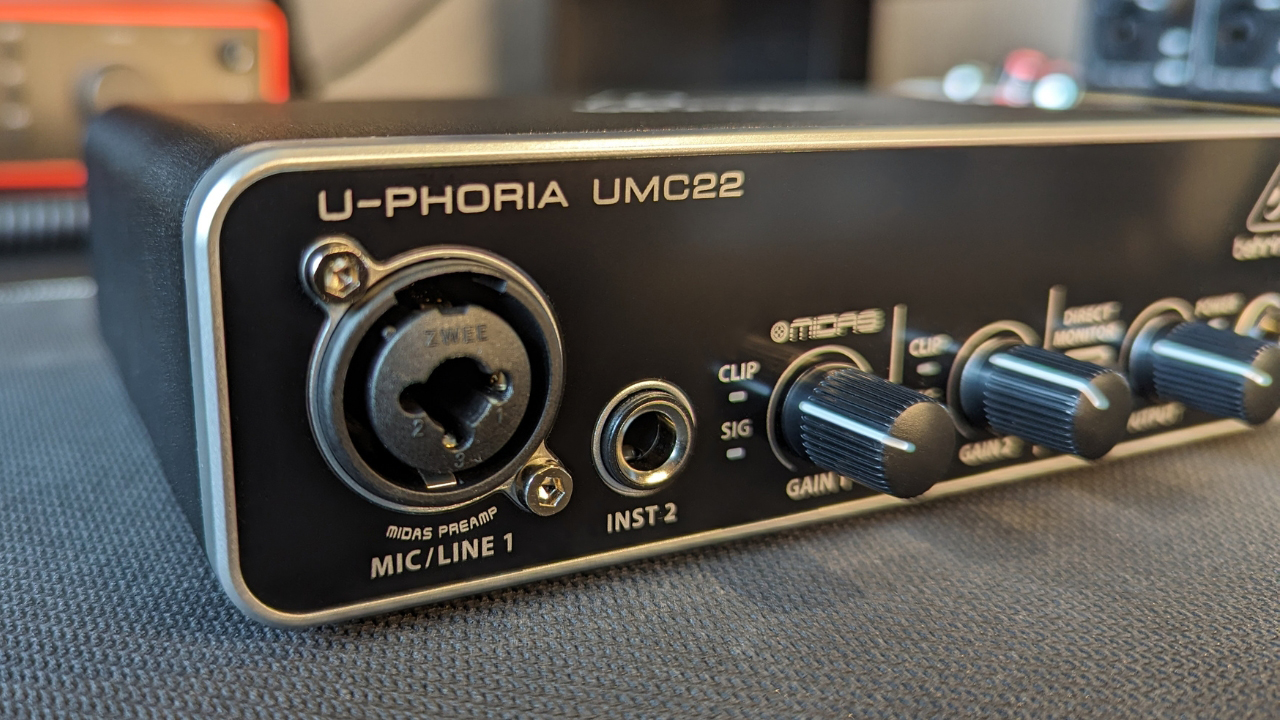
Unboxing the UMC22 my first thought was that it’s absolutely tiny. It’s also very minimalist in design compared to other interfaces I’ve tested, with a lot of blank space on the front panel. It’s actually quite refreshing to have something so sleek where other manufacturers are typically shoving as many features as possible, this one looks super clean.
There are two inputs, a single mic/line combi input featuring a Midas preamp and a 1/4-inch instrument input next to it. Each channel has a dedicated gain knob, with a direct monitor button alongside that and a master volume control for the output. You get a headphone out on the front panel and that’s your lot. On the reverse things are similarly spartan with a USB-B out, phantom power switch, and two 1/4-inch outputs.
Behringer UMC22 review: Installation
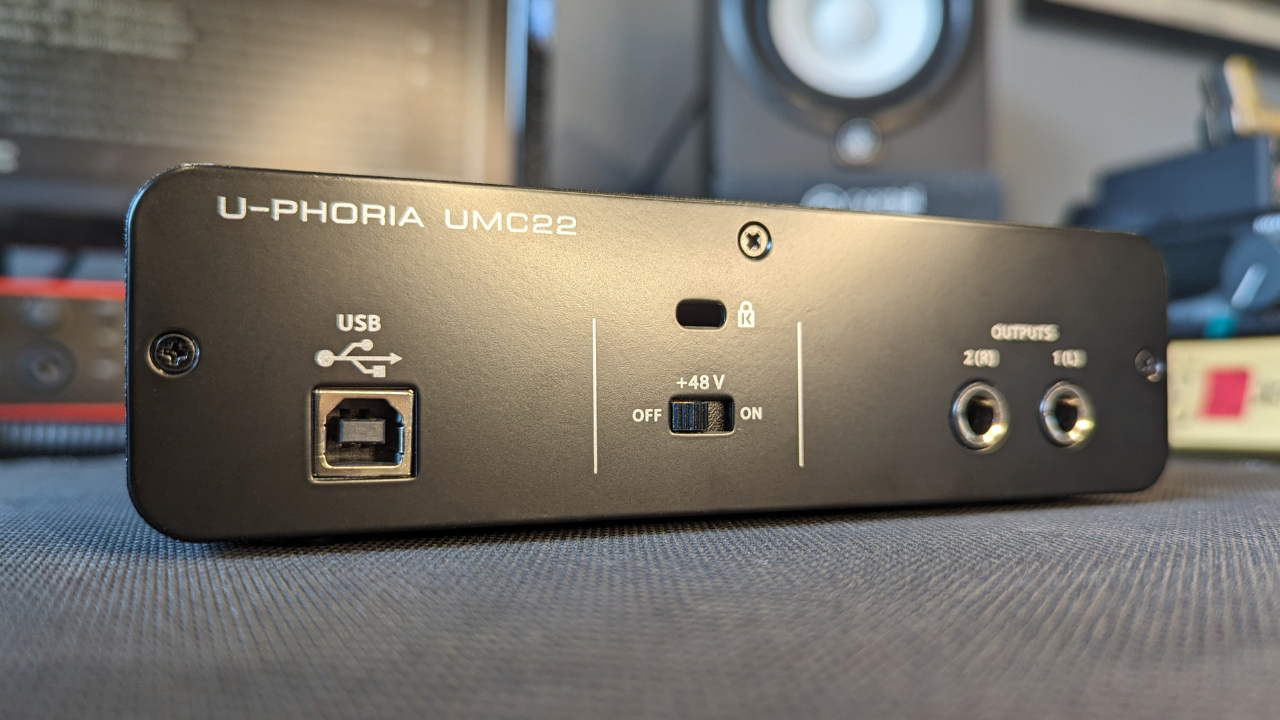
There’s no dedicated Windows driver for the UMC22, instead, if you go to the appropriate downloads page on the Behringer website it curiously only features product pictures. Other Behringer interfaces in the U-Phoria range do have drivers, such as the UMC404HD which I used a few years back, so I’m guessing the lack of driver support is how they keep it so cheap.
It’ll work in Windows without installing anything extra, but you’ll need to use a third-party driver to get this interface to work in any DAW, and I heartily recommend using ASIO4ALL. It’s totally free, super easy to install, and can come in handy for other scenarios like streaming with OBS.
On Mac, it will work without any additional software too, although I had to take a couple of extra steps to get recording in Pro Tools. PT didn't immediately recognize it as a device, meaning I needed to dive into the I/O menu before I was able to arm a track and start recording. Nothing too difficult for someone well versed in these matters, but definitely something to note for the first-time user this interface is aimed at.
Want all the hottest music and gear news, reviews, deals, features and more, direct to your inbox? Sign up here.
Behringer UMC22 review: Usability
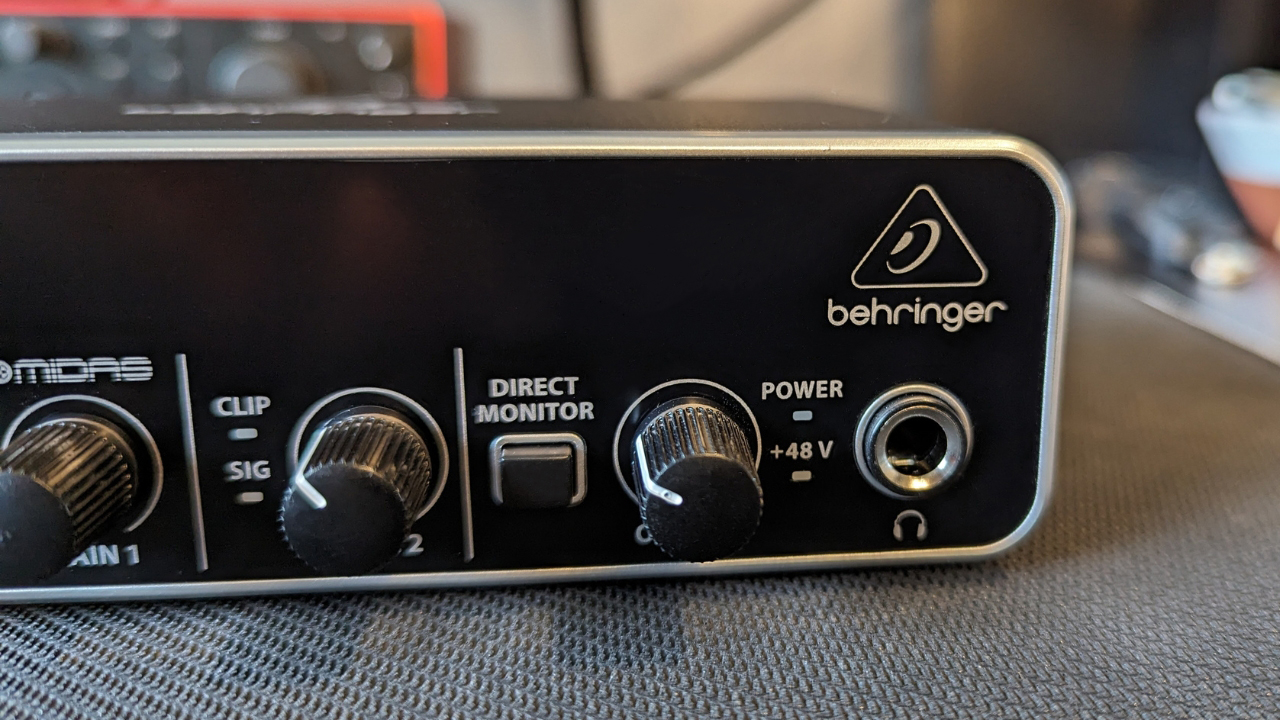
Using the UMC22 is no more difficult than using any other interface I’ve encountered. The lack of additional software does mean you need to take a few extra steps compared to others, but for anyone other than absolute beginners this shouldn’t be too hard. I began my test of this budget Behringer interface by loading up my guitar demo template and laying down some tracks alongside a pre-programmed drum beat, and it did a stellar job here.
The latency wasn’t great on my older Windows machine, especially as the plugins started to stack up, so you will need good specs to get the best out of the UMC22. I had zero issues running the minimum hardware buffer on my MacBook Air M1 however, even with a bunch of amp sims, reverbs, and a drum VST running. It certainly performed just as well as other interfaces that cost a lot more money and for a home recording rig, I really couldn’t knock anything about it in terms of pure performance.
Interestingly it doesn’t have a dedicated headphone volume knob, instead, you have to control the output of both headphones and monitors with a single master volume. The headphones do allow you to monitor the sound from your DAW, but there’s no way to separate the two so you’ll need to turn your speakers off if you want to check the low end with headphones. The direct monitor button gives you a half-and-half effect if you’re monitoring a track in your DAW, and works the same way with both headphone and monitor volume controlled from the same knob.
Behringer UMC22 review: Sound
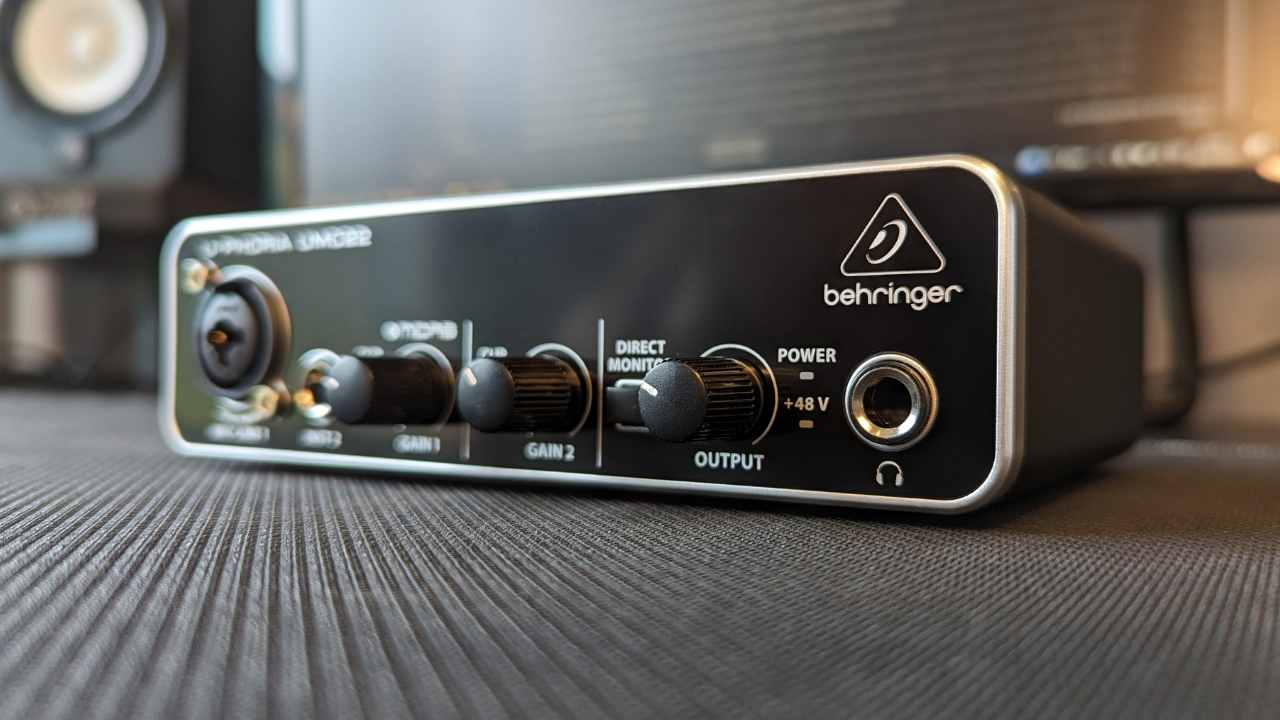
In terms of sound, the overall quality was perfectly usable for home recording, and I got some great guitar tones out of the UMC22 going direct and combining with my favorite amp sim. It doesn’t drive headphones hard, so if you have a high-ohm pair you’ll want a headphone amp but it has plenty of oomph to deliver plenty of power through the monitors, and we couldn’t say it sounds objectively any better or worse than any other audio interface at this level.
Modern interfaces are very close to one another in terms of preamp quality, but there is one where the ultra-low price of the UMC22 becomes more obvious, and that’s the noise floor. I found an audible whine present when recording near a couple of big screens, my studio monitors, and the various bits of musical gear that are part of my setup.
Of course, this is most likely due to everything being plugged into an extension lead, however, it was definitely more pronounced than when I tested the Focusrite Scarlett 4th Gen interfaces on the same setup. It’s not a deal breaker, but if you were to record some quiet sources via a condenser microphone I could see this becoming an issue without some serious steps to cut down noise from extraneous sources in your recording setup.
Behringer UMC22 review: Verdict
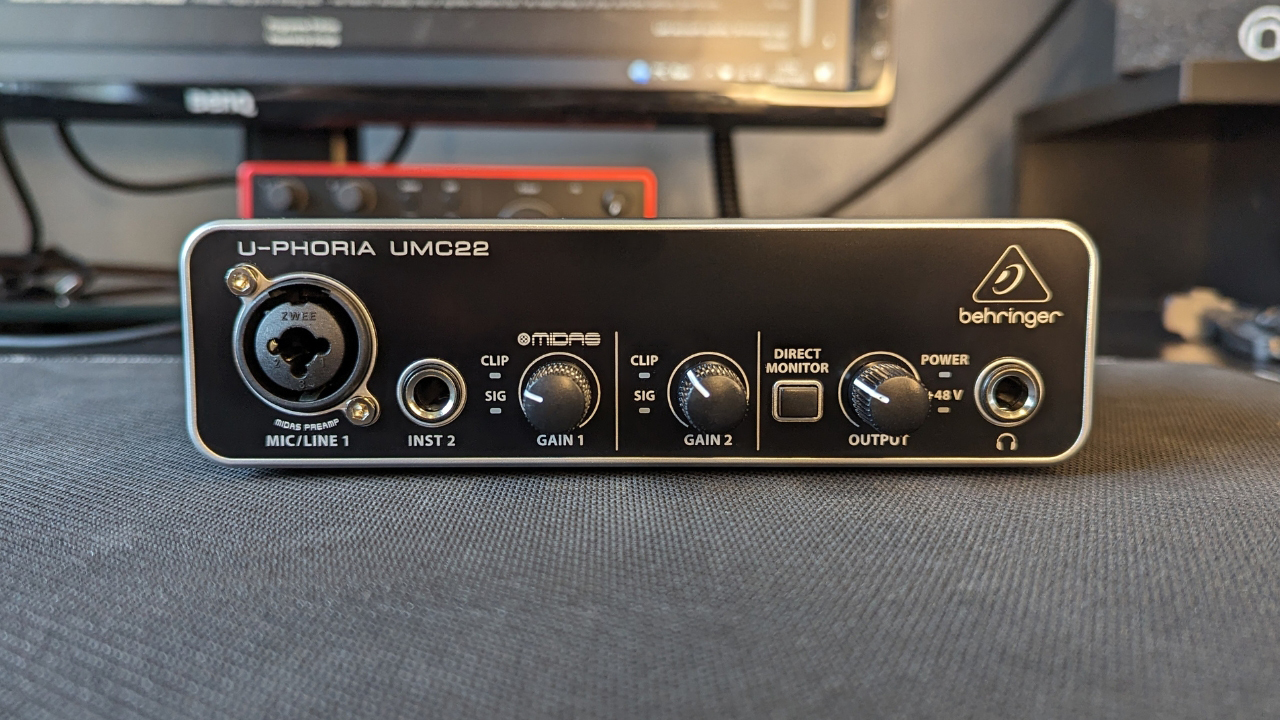
For the money, it’s really quite hard to knock the Behringer UMC22. It’s more than capable of handling home recording duties and producing good-quality audio from a variety of sources. It has its downsides of course, particularly on Windows machines thanks to the lack of a dedicated driver, but ultimately it’s nothing that stops you from doing the job of recording at home. If you’re just getting into recording your own music, or money’s tight and you need something low-cost, it’s hard to look past this brilliant budget interface
Behringer UMC22 review: Specs
- Connectivity: USB 2.0
- Simultaneous I/O: 2 x 2
- Number of Preamps: 1 x mic, 1 x instrument
- Phantom Power: Yes
- A/D Resolution: 48kHz
- Analog Inputs: 1 x XLR-1/4" combo (mic/line), 1 x 1/4" (Hi-Z)
- Analog Outputs: 2 x 1/4"
- Headphones: 1 x 1/4"
- USB: 1 x Type B
- Bus Powered: Yes
- Contact: Behringer

Matt is a Junior Deals Writer here at MusicRadar. He regularly tests and reviews music gear with a focus on audio interfaces, studio headphones, studio monitors, and pretty much anything else recording-related. Matt worked in music retail for 5 years at Dawsons Music and Northwest Guitars and has written for various music sites including Guitar World, Guitar Player, Guitar.com, Ultimate Guitar, and Thomann’s t.blog. A regularly gigging guitarist with over 20 years of experience playing live and producing bands, he's also an alumnus of Spirit Studios, where he studied studio engineering and music production.
